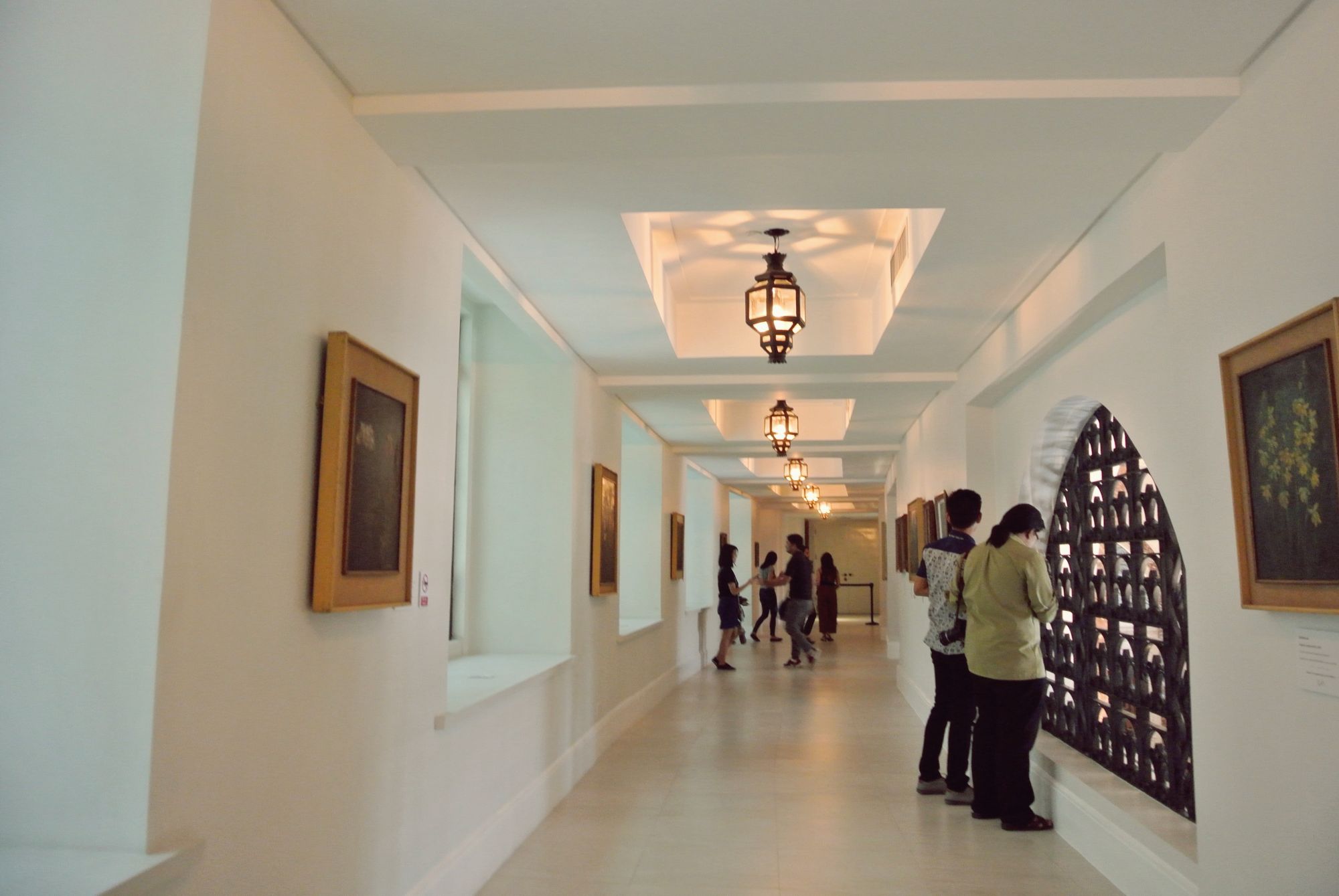Photo 1 of 42 The Building Facade
Photo 2 of 42 Ramon Orlina's "Arcanum XIX" sits at the foot of The Tree of Life.
Photo 4 of 42 Petrified wood from IloIlo, Panay Island.
Photo 5 of 42 On display in the first floor are some petrified wood collections.
Photo 6 of 42 A close-up on a piece of petrified wood (750, 000 years old) from the Cagayan area, Northern Luzon.
Photo 7 of 42 Students, families, and other curious joes flocked to the museum.
Photo 8 of 42 A Mookaite Stone
Photo 10 of 42 The ceiling design creates picturesque sunlight patterns on the courtyard floor.
Photo 12 of 42 View of the courtyard from the 5TH floor.
Photo 13 of 42 The elevator entrance on the top floor.
Photo 14 of 42 Fully airconditioned, guests can liesurely enjoy and explore the museum with ease and comfortability.
Photo 15 of 42 Ceiling-view. "A symbol of the encompassing embrace of all life on earth under God and nature", the Tree of Life is not simply a beautiful structure, it serves as an expression of the museum's philosophy.
Photo 16 of 42 As you exit the elevator, you cross a viewing bridge to get to the exhibitis.
Photo 19 of 42 The opening was a huge hit gathering long lines from morning till afternoon.
Photo 20 of 42 The building was fully stripped of electrical, plumbing, and non-essential structures to make way for a whole new museum layout.
Photo 21 of 42 "Tridacna gigas" - this species is the largest of all giant clams at 1.5 metres across, weighing 200 kilos.
Photo 22 of 42 A diorama of baby "pawikan" (sea turtles)
Photo 23 of 42 A close-up on one of its ridges.
Photo 24 of 42 Ocean Life exhibit
Photo 25 of 42 A preserved sea turtle
Photo 26 of 42 A viewing hall plays an educational video on the UNESCO Heritage sites found in the Philippines: The Tubbataha Reef, Puerto Princesa Underwater Caves, and Mt. Hamiguitan Range Wildlife Sanctuary
Photo 27 of 42 In another hall, the preserved bones of "Lolong" welcome visitors.
Photo 28 of 42 In another hall, bird taxidermy abounds.
Photo 30 of 42 A display shows the modern kit of a "Naturalist"
Photo 31 of 42 Butterfly preserves
Photo 32 of 42 Some bristlecone pines on exhibit
Photo 33 of 42 The museum aims to be more interactive, thus creating several engaging activities in the middle of exhibit halls.
Photo 34 of 42 Here, visitors get to trace leaf patterns and try their hand at "Scientific Illustrations"
Photo 36 of 42 Leaf preserves
Photo 37 of 42 Materials used to sketch old botanical samples
Photo 39 of 42 "Tinuy-an", an adult female Philippine Eagle rescued in Mindanao circa 1897.
Photo 40 of 42 Upon entering, you are greeted by the sprawling lobby/ indoor courtyard.
Photo 41 of 42 Outside the Kalaw entrance of the building lies huge Mayon Volcano boulders on display.
Photo 42 of 42 Fronting the main entrance (from Luneta Park), a life-size replica of the Indo-Pacific Crocodile "Lolong" greets guests.









































